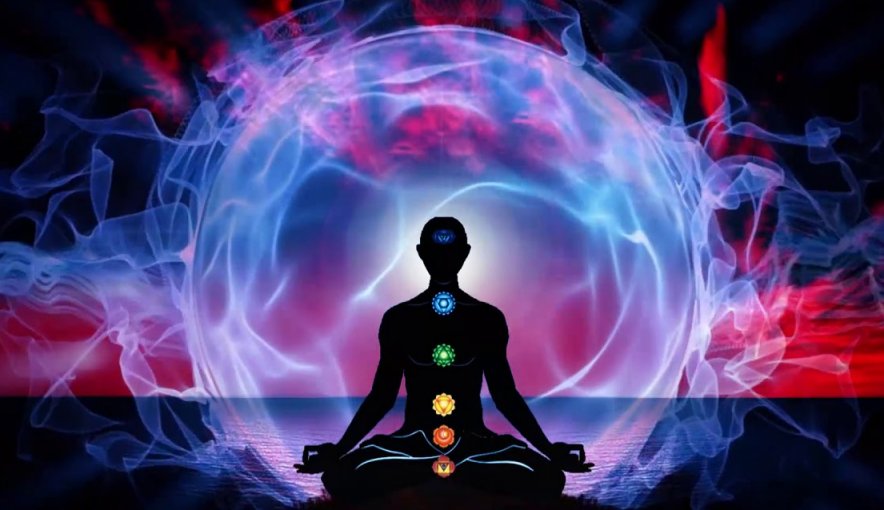What Is Meditation?
Simply put, meditation is another word for mindfulness, or “giving thought to.” Meditation has been practiced since the dawn of man, and consists of various different methods or forms.
What Does Meditation Do?
Basically, it is a method of achieving a calm state of mind and body.
Being mindful towards a calm state of mind and body in turn affects our brain, by slowing down the electromagnetic frequencies emitted.
This, in turn, sends signals to various parts of the body to relieve tension and promote further relaxation and tranquility.
How Do I Meditate?
The simplest method is to find a comfortable spot and sit upright in a comfortable position, with your eyes closed. Closing the eyes instantly changes the brainwave frequency, and triggers a body-mind connection.
Once you’ve done this step, you are already in a meditative state.
The next step involves deepening the body-mind connection.
The Simplest Method: Focus on Breath
The simplest method to deepening your meditative state is to focus on your breathing.
Become conscious of your breath coming in, and your breath going out.
1. Take a slow, deep breath in, taking in as much air as your lungs allow. Visualize the air going into your lungs as you do this.
2. Next, release the air and slowly breathe all the air out of your lungs. Visualize the air going out of your lungs as you do this.
Repeat the above two steps.
Focus on Relaxing the Body
Return to normal breathing, yet remaining conscious of your breath going out, and your breath coming in.
Start to name each and every body part, and with each body part, relax and loosen any muscle tension in that body part. This is known as progressive muscle relaxation.
Example:
- Release tension in the feet, visualize the toes and soles of your feet relaxing and letting go.
- Release tension in your legs, visualize the ankles, calves, and shins relaxing and letting go.
- Release tension in your pelvis, visualize your hips and buttocks relaxing and letting go.
- Release tension in your gut, visualize your stomach relaxing and letting go.
- Release tension in your back, visualize your back muscles relaxing and letting go.
- Release tension in your arms, visualize your arms relaxing and letting go.
- Release tension in your hands, visualize your hands and fingers relaxing and letting go.
- Release tension in your neck, visualize your neck muscles relaxing and letting go.
- Release tension in your shoulders, visualize your shoulders relaxing and letting go.
- Release tension in your head, visualize your eyes, ears, jaw relaxing and letting go.
You can go into as much detail as you like, focusing on just relaxing each particular body part in sequence until you’ve named all your body parts.
By consciously relaxing each body part, you are triggering an inter-connectedness of all body parts, promoting the flow of energy throughout the entire body, relieving and overcoming any energy blockages or stress points.
Guided Meditation
You may find it easier to follow the voice of an instructor, who guides you through the above steps, removing your conscious need to name each body part yourself. This way, you simply follow the audio instructions with your eyes closed, without thought.
This can be done in person, or with the help of online resources containing vocal guidance for meditation.
Adding Sound to Meditation
Adding sounds is another method of enhancing or deepening the meditative state.
These sounds can be relaxing chimes, music, or the sounds of nature, such as rain and thunder.
More specific sounds can be used such as white noise, or brown noise, or specific beats that can enhance the deeper and slower brain frequencies (known as binaural beats).
Visualization

Meditative healing through visualizationOne of the primary methods of meditation to calm the body and promote tranquility and healing is visualization.
1. This involves simply visualizing white light, as healing energy entering the body through the top of the head or crown chakra, and travelling to the parts of the body that need healing, or release of tension.
2. You can also visualize negative energy, as red or dark light, leaving the parts of the body that are experiencing pain or soreness, travelling out through the bottom of your feet.
Repeat the above two steps until all the negative energy has left the body, and is replaced with white healing energy.
Enhance Your Meditative Experience
Some methods to enhance your meditative experience is to use incense and candles.
Even better if you set aside a special room or space for meditation, where you can add ambient lighting.
And finally, meditating in nature, such as on a beach, a park, or in the forest — can prove especially relaxing, and will allow you to focus on the natural sounds provided by mother earth.
How Long Should I Meditate For?
There is no set standard of how long you should meditate. Suffice it to say, the longer your session, the better your results will be.
If you can meditate for a minimum of 15 minutes a day, and increase the length of time as your schedule allows, you are on the right path.
How Often Should I Meditate?
In today’s hectic schedule, to put it simply, it’s best to meditate as often as you can.
A great guideline is to set time aside every day, either in the morning after waking up, and/or before bed time.
We hope you found the information above useful. Leave a comment below, or contact us if you have any questions.
